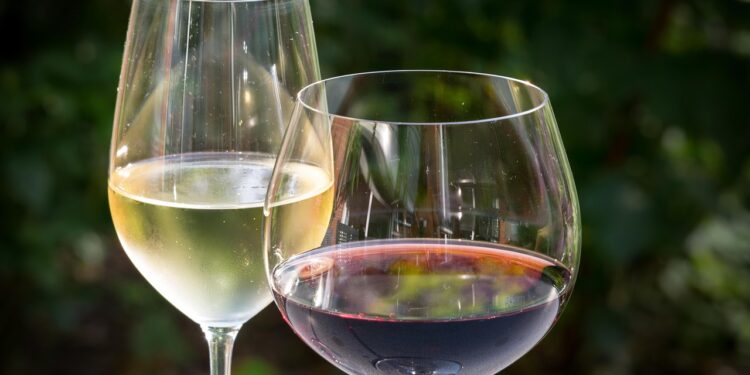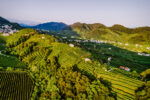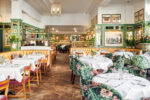What are the differences between red and white wine?

Wine is one of the most appreciated beverages worldwide and takes on different forms depending on production techniques and regional traditions. Among the best-known varieties are red and white, which differ in winemaking process, sensory profiles and gastronomic uses. Examining the differences between red and white wine helps to better understand the role both types play in wine culture and everyday life.
How production methods shape red and white wines
The production process is the first element that clearly distinguishes red wine from white. For reds, the key stage is maceration: the skins and sometimes the seeds remain in contact with the must during fermentation, releasing pigments, tannins and aromatic compounds. This prolonged contact determines the color intensity and structure typical of red wines. In whites, maceration is minimised or completely avoided. After pressing, the must is quickly separated from the skins to preserve freshness, acidity and lightness, which define the style of this category.
Temperature management is another crucial aspect. Red wines ferment at higher temperatures, often between 25 and 30 degrees, which favors the extraction of phenolic compounds and complex aromas. White wines are fermented at significantly lower temperatures, generally between 15 and 20 degrees, in order to preserve delicate floral and fruity aromas that would otherwise be lost.
The use of wood also contributes to the distinction. Reds, especially those destined for long aging, are matured in barrels, which enrich their aromatic profile with spicy and vanilla notes. Whites, although they can also be aged in wood, are more often vinified in stainless steel, a choice that enhances freshness and varietal clarity.
Colour, aromas and sensory profiles
The visual contrast between red and white wine is immediate but goes beyond aesthetics. In reds, the presence of skins during fermentation transfers natural pigments, anthocyanins, to the must, producing shades ranging from deep ruby to garnet. This prolonged contact with solid parts also enhances structure, resulting in more pronounced sensations on the palate. In whites, the absence of maceration keeps the liquid clear, with tones ranging from pale straw yellow to golden, reflecting freshness and lightness.
The aromatic profile also follows distinct paths. Red wines often show notes of ripe red fruit, spices and, when aged in wood, hints of vanilla, tobacco or cocoa. White wines tend to have more delicate aromas, recalling citrus, white flowers and orchard fruit. Grape varieties and vinification techniques contribute to this diversity, and maturation plays a decisive role. Stainless steel highlights freshness, while wood can enrich the bouquet with more complex nuances.
The way wine is served helps define the sensory experience. Reds are generally enjoyed at slightly higher temperatures, which allow their aromatic richness to emerge more fully. Whites are served cooler, helping to maintain their lively fruity and floral components. Glass shape also plays a part: wide bowls suit reds by promoting oxygenation, while narrower shapes are better for whites as they concentrate aromas.
Pairing red and white with food
Food pairing clearly shows the distance between red and white wines. Reds, with higher tannins and structure, are matched with rich and substantial dishes such as red meats, game and aged cheeses. Their intensity balances the fat content of these preparations and highlights complex flavors. Whites, on the other hand, are better suited to delicate foods such as fish, shellfish, white meats and vegetables. Their freshness and acidity make them ideal for lighter dishes, where they support flavors without overpowering them.
Traditional guidelines are useful but not absolute, as grape varieties and vinification styles produce wines that often go beyond classic rules. Full-bodied whites can accompany meat dishes, while young and light reds can pair successfully with fish or vegetarian preparations. This variety shows how contemporary winemaking has expanded the range of possible combinations, reducing the rigidity of traditional distinctions.
Regional cuisine also plays an important role. In areas where fish and seafood predominate, such as Galicia, producers have developed fresh and aromatic whites that match local dishes. In regions with strong traditions of meat and aged cheeses, such as Piedmont, reds have evolved with greater structure and intensity to complement the cuisine. In this way, culinary habits influence not only consumption but also the style of wines produced.
Storage, serving and tasting conditions
Even after production and pairing choices, red and white wines follow different rules in terms of storage and consumption. Reds usually require slightly higher serving temperatures, between 14 and 18 degrees, which help to reveal their aromatic complexity and structure. Whites are served cooler, between 8 and 12 degrees, in order to preserve freshness and vibrancy. Serving temperature has a direct impact on perception, since wine served too warm or too cold loses part of its character.
Storage follows similar logic. Reds, especially those aged, can evolve for years in the cellar, developing tertiary aromas such as spices or leather. Whites generally have a shorter lifespan, intended to be consumed within a few years of harvest, although some varieties, such as Riesling or barrel-aged Chardonnay, show remarkable aging potential.
Glassware also contributes to wine appreciation. Wide glasses allow reds to oxygenate and release complex aromas, while narrower ones are preferred for whites, as they preserve freshness and concentrate fragrances. These details, though apparently secondary, significantly influence the overall tasting experience.
The role of producers and new labels
The distinction between red and white concerns not only taste and pairings but also the way wines are presented and distributed. Visual identity and market positioning have become central elements for producers and wholesalers, who combine winemaking expertise with the ability to adapt wines to different markets. Interbrosa, a Spanish wine wholesaler with long-standing international experience, supports restaurateurs and distributors in developing private label wine projects. These are wines produced by selected wineries but marketed under customised labels, allowing distributors to align the product with their brand identity and market needs.
Creating dedicated labels is not simply an aesthetic exercise but a way to connect wine with local gastronomic traditions and consumer expectations. A structured red can be positioned as a symbol of regional cuisine, while a fresh and aromatic white can reinforce the image of a menu linked to the sea. In both cases, personalisation transforms wine into a tool of recognition and builds a direct link between territory, producer and market.









